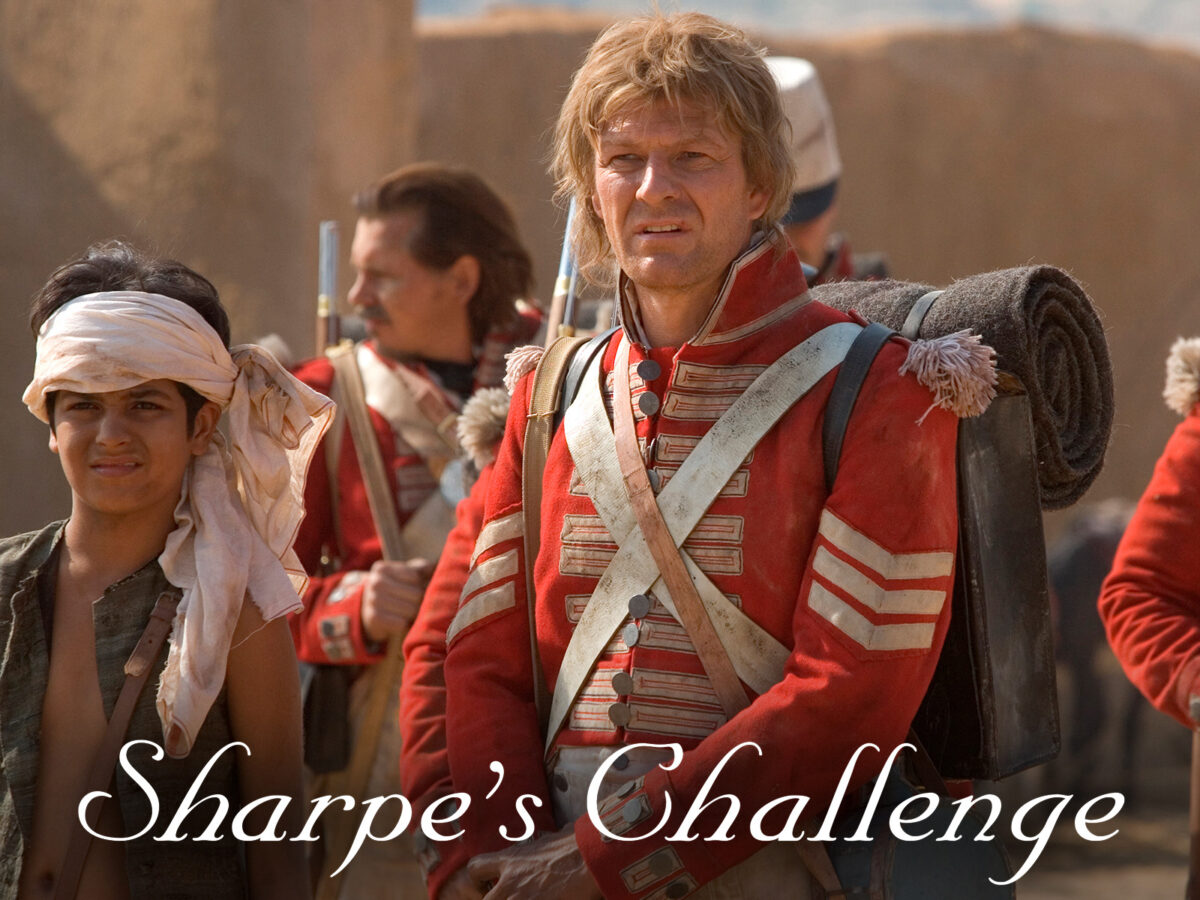Introduction:
“Sharpe’s Challenge” (2006), a made-for-television film based on Bernard Cornwell’s popular “Sharpe” series, catapults audiences into the tumultuous world of Richard Sharpe, a charismatic and daring British soldier. Directed by Tom Clegg, this cinematic offering takes Sharpe (played by Sean Bean) and his loyal band of riflemen on a riveting adventure in colonial India. As we navigate the sweeping landscapes, encounter treacherous foes, and witness Sharpe’s indomitable spirit, we uncover the essence of this action-packed historical drama.
Plot Overview:
Set in 1817, “Sharpe’s Challenge” follows the enigmatic and battle-hardened Richard Sharpe, now a Major in the British Army, as he embarks on a perilous mission to rescue a group of hostages in the remote kingdom of Avadh, India. Tasked with navigating through the treacherous Khyber Pass, Sharpe and his men face not only the challenges of the unforgiving terrain but also the cunning strategies of their adversaries.
Upon reaching Avadh, Sharpe discovers that the situation is more complex than anticipated. Political intrigue, power struggles, and an impending rebellion cast a shadow over the mission, forcing Sharpe to navigate a landscape of shifting alliances and hidden agendas. The film unfolds as a thrilling blend of military strategy, personal vendettas, and the unwavering camaraderie of Sharpe’s Rifles.
Cinematic Craftsmanship:
- Sean Bean’s Riveting Performance: Sean Bean reprises his role as Richard Sharpe with the same charisma and intensity that made the character iconic. Bean’s portrayal captures Sharpe’s resilience, tactical brilliance, and the internal conflicts that define the character. His nuanced performance anchors the film, making Sharpe’s journey a compelling and emotionally charged experience.
- Historical Authenticity and Production Design: “Sharpe’s Challenge” excels in its commitment to historical authenticity, evident in both costume design and set production. The film transports viewers to colonial India with meticulous attention to detail, showcasing the rich tapestry of the era. The vibrant costumes, weaponry, and set pieces contribute to the immersive experience, allowing audiences to step into the past.
- Epic Cinematography and Locations: The film takes full advantage of its stunning shooting locations, capturing the grandeur of the landscapes. From the perilous mountain passes of the Khyber to the opulent palaces of Avadh, the cinematography by Chris O’Dell elevates the visual storytelling. The expansive shots and dynamic camera work bring the scale of the adventure to life.
- Intricate Plot and Political Intrigue: “Sharpe’s Challenge” weaves a complex narrative that goes beyond mere military action. The film delves into political intrigue, exploring the machinations of colonial powers and local rulers. The plot introduces a diverse cast of characters, each with their own motivations and allegiances, adding layers of depth to the storyline.
- Stirring Musical Score: The film’s musical score, composed by Dominic Muldowney, enhances the emotional beats and intensity of the narrative. The evocative music complements the on-screen action, capturing the triumphs and tribulations of Sharpe and his Rifles. Muldowney’s score becomes an integral part of the film’s atmosphere, heightening the overall cinematic experience.
- Combat Sequences and Swashbuckling Action: “Sharpe’s Challenge” delivers on its promise of action with well-choreographed combat sequences. The film’s action scenes, whether set in the rugged mountains or amidst the opulent architecture of Avadh, showcase Sharpe’s strategic brilliance and the prowess of his Rifles. The swashbuckling elements add an exciting dimension to the historical drama.
Legacy and Impact:
While “Sharpe’s Challenge” may not have received the same widespread acclaim as some big-screen blockbusters, it occupies a special place in the hearts of fans of historical and military dramas. The film’s success lies in its ability to faithfully translate the essence of Bernard Cornwell’s beloved Sharpe series to the screen, bringing the character and his adventures to a broader audience.
The impact of “Sharpe’s Challenge” extends beyond its initial release, contributing to the enduring popularity of the Sharpe franchise. Sean Bean’s portrayal of Richard Sharpe remains a standout in the actor’s career, and the film serves as a testament to the enduring appeal of historical adventures infused with rich characters and captivating narratives.
Conclusion:
As we traverse the rugged terrains of colonial India in “Sharpe’s Challenge” (2006), we find ourselves immersed in a swashbuckling adventure that blends historical authenticity with cinematic brilliance. Tom Clegg’s direction, Sean Bean’s stellar performance, and the commitment to recreating the era on screen make this television film a standout in the historical drama genre.
“Sharpe’s Challenge” stands as a testament to the enduring allure of Richard Sharpe and his Rifles, offering audiences a thrilling journey through a turbulent period in colonial history. The film’s success lies not only in its action sequences and production design but in its ability to capture the essence of Bernard Cornwell’s source material. As fans continue to revisit the adventures of Sharpe, “Sharpe’s Challenge” remains a noteworthy chapter in the ongoing legacy of this iconic literary and cinematic character.
